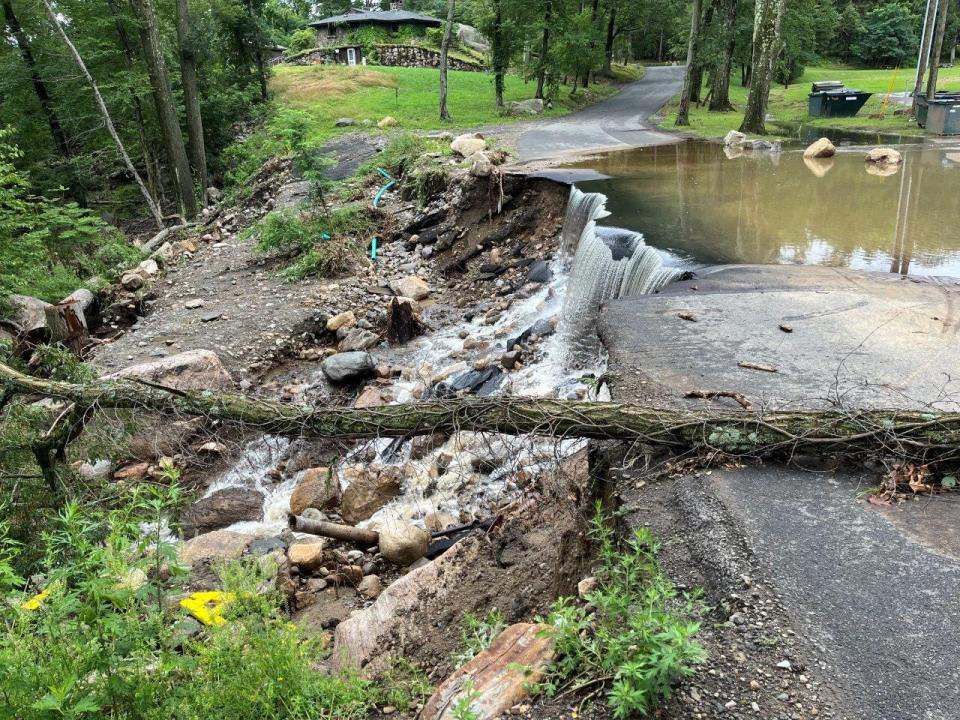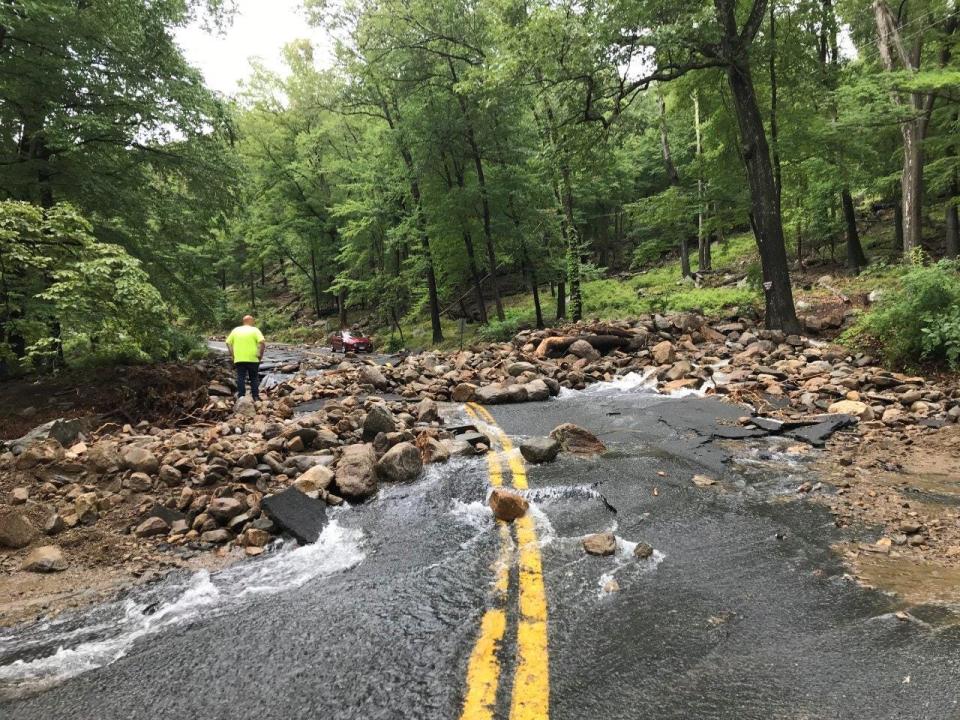'What a mess!' Significant storm damage shutters Bear Mountain State Park
More than a week after torrential rains stranded motorists, injured hikers and caused myriad road closures around the Hudson Valley, much of Bear Mountain State Park remains closed and certain locales in Harriman State Park are also off limits.
"It's been devastating," Joshua Laird, executive director of the Palisades Interstate Parks Commission, said. "It's been jaw-dropping how much damage" Bear Mountain sustained.
When Laird toured Bear Mountain a day after the storm, he worried the park would have to be closed for months. Now he's hoping that day by day, things will open up. "We're making really good progress," he said.
Why floods continue to hit NY: One graphic shows why the Hudson Valley will keep facing threats from flash floods
Damaged facilities at Bear Mountain
Bear Mountain, with sweeping Hudson River vistas, encompasses some 5,000 acres. It's a day-use park with plenty of family-friendly amenities, including a zoo, a merry-go-round, ice skating in winter and a big pool.
The park has its own water treatment plant that was knocked out by the July 9 flooding. "Until we figure that out, we're not going to be able to open without water for bathrooms," Laird said.

While the Bear Mountain Trailside Museum and Bear Mountain Zoo is closed, the animals are fine, Laird said. The park is bringing in fresh water for them.
The historic Bear Mountain Inn and Conference Center has yet to reopen.
Harriman State Park rebounds after storm
In Harriman, the popular Lake Welch reopened to swimmers July 12. Repeat inspections are planned for the extensive dam system that helped create most of the 31 lakes and reservoirs in the park.
Harriman hosts dozens of summer sleepaway camps. The storm hit when many were between sessions, so one set of campers had left and the new group hadn't yet arrived, Laird said.
Most camps sustained little to no damage. Some had to delay their new sessions for a few days because of road conditions. Laird said the state parks police and personnel helped figure out open roads to get campers where they needed to be.

What's the status of the Appalachian Trail in these areas?
Bear Mountain and Harriman host the oldest stretch of the Appalachian Trail, which was launched in 1923 in the parks. At nearly 2,200 miles, the AT is longest hiking-only footpath in the world, stretching from Georgia to Maine.
After severe washouts and dramatic rescues July 9, thru hikers are again able to access the Bear Mountain portion of the trail.
Rescue: How first responders saved dad, son swept off Bear Mountain hiking trail in flash flood
But as Rob Weisberg posted on social media this past weekend after passing through, "What a mess!"
Weisberg was a a Long Island volunteer firefighter on Sept. 11, 2001, and responded to the nearest FDNY firehouse to help in the response to the terrorist attacks. He's tackling the Appalachian Trail to raise funds for Paws of War and to raise awareness about the PTSD challenges that military and first responders often face.
Dramatic swings of weather patterns
Even wild spaces suffer from the dramatic swings of weather patterns in an era of climate change, Laird said.
Last summer, a series of brush fires pressed Harriman and Bear Mountain amid hot dry weather. That loss of vegetation created further issues during this wet season.
"From drought, flood, storm, pests that have worked their way from other parts of the country because of changes in temperature," Laird said. "It all ties together."
The July 9 storm poured down the average amount of rainfall for a month in a couple hours.
"Our drainage infrastructure in this park was designed for the storms of 100 years ago," Laird said. "Once the drainage culverts and the swales are overloaded, the road itself can become the drainage path."
The focus now, Laird said, is on "not just fixing what we lost but how we an make it better and more resilient. Can we better prepare ourselves."
Nancy Cutler writes about People & Policy for lohud.com and the USA Today Network New York. Find her on Twitter, Threads and Instagram at @nancyrockland.
This article originally appeared on Rockland/Westchester Journal News: Hudson Valley storm wipes out Bear Mountain State Park, damages zoo

